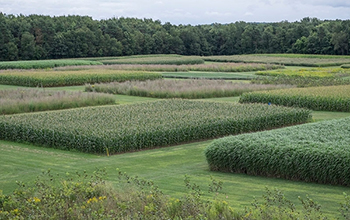
Research News
Soil pore structure key to carbon storage, climate impacts
July 30, 2019
Scientists have discovered a new mechanism for determining how carbon is stored in soils, which could improve the climate resilience of crop systems and reduce their carbon footprints.
The findings, published in the journal Nature Communications, reveal the importance of soil pore structure for stimulating soil carbon accumulation and protection.
“Understanding how carbon is stored in soils is important for thinking about solutions for climate change,” said Phil Robertson, a plant, soil and microbial scientist at Michigan State University and a co-author of the study. “It’s also important for ways of thinking about soil fertility and therefore, crop production.”
The study was conducted at the NSF Kellogg Biological Station Long-Term Ecological Research site, one of 28 NSF LTER sites around the world in ecosystems from grasslands to forests, coral reefs to the open sea.
Researchers studied five crop systems in southwest Michigan. Of the five, only the two with high plant diversity resulted in higher soil carbon levels.
Study co-author Alexandra Kravchenko, a Michigan State University plant, soil and microbial scientist, and her colleagues used X-ray micro-tomography and micro-scale enzyme mapping to show how pore structures affect microbial activity and carbon protection in these systems, and how plant diversity then impacts the development of soil pores conducive to greater carbon storage.
John Schade, a program officer in NSF’s Division of Environmental Biology, which funds the Kellogg Biological Station site, said the results may transform the understanding of how carbon and climate interact in plant and soil microbial communities. “This is a clear demonstration of a unique mechanism by which biological communities can alter the environment, with fundamental consequences for carbon cycling,” Schade said.
The research was also supported by NSF’s Division of Earth Sciences and by the MSU Great Lakes Bioenergy Research Center, funded by the U.S. Department of Energy.
—
NSF Public Affairs,
(703) 292-7090 media@nsf.gov







